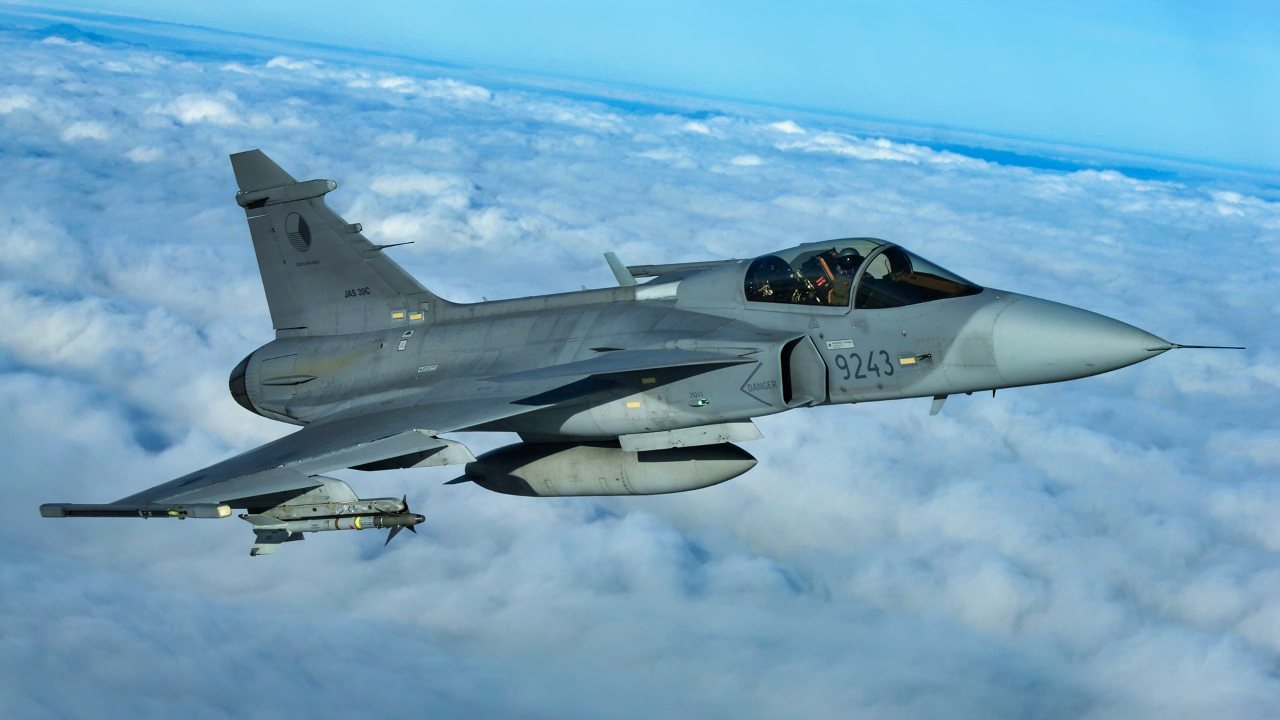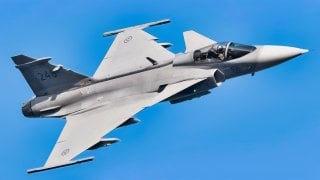Can't Afford F-35 Fighters? The JAS 39 Gripen Is a Powerhouse
Saab's JAS 39 Gripen jet fighter has been marketed as an alternative to the Lockheed Martin F-35
Summary and Key Points: Saab's JAS 39 Gripen jet fighter has been marketed as an alternative to the Lockheed Martin F-35.

-While NATO members like Canada and the Czech Republic chose the F-35, Hungary has committed to expanding its fleet of Gripens. Hungary recently announced the purchase of four additional Gripen C/D fighters, adding to its existing fleet of 14.
-This deal underscores Hungary's commitment to NATO and enhancing its air defense capabilities.
-Saab and Hungary have also signed a memorandum of understanding for future upgrades and support.
Hungary Expands JAS 39 Gripen Fleet, Strengthening NATO Air Defense
Swedish aerospace firm Saab has attempted to court buyers for its JAS 39 Gripen jet fighter – which has been widely marketed as an alternative to the Lockheed Martin F-35 multirole stealth aircraft. While NATO members Canada and the Czech Republic opted for the F-35, Hungary went in another direction.
In advance of Budapest's approval of Sweden's bid to join the international alliance months back, the Hungarian government announced it had signed a deal to buy four JAS 39 Gripen C/D fighters. The Hungarian Air Force already operates 14 of the aircraft as part of an agreement that was reached back in December 2001.
"With the Gripen fighter, Hungary has one of Europe's most capable air forces. We look forward to continuing our close collaboration with the Hungarian Government and defense industry," Micael Johansson, president and CEO of Saab, said in the statement.
Saab also noted that it currently has a contract with the Swedish Defence Materiel Administration (FMV) regarding support for Hungary's Gripen aircraft, while the company is also ready to provide additional upgrades and support for the Hungarian fighters beyond 2035. Saab and the Hungarian Ministry of Defense further signed a memorandum of understanding (MoU) regarding the development of high-tech industrial areas and fighter aircraft capabilities, while the cooperation includes support for the establishment of a Centre of Excellence for VR technologies in Hungary.
"We not only keep our air defense capability but will increase it ... which means our commitment to NATO will strengthen and so will our participation in NATO's joint operations," Hungary's Prime Minister Viktor Orban told a joint press conference with Swedish Prime Minister Ulf Kristersson earlier months back.

According to Breaking Defense, Hungary was the third country – behind Sweden and the Czech Republic – to operate the Gripen C/D planes, initially acquired under a lease agreement for 12 single-seaters (Gripen C) and a pair of two-seaters (Gripen D).
The jets are in service with the Hungarian Air Force’s Puma squadron, based out of Keskemét Air Force Base, and are responsible for protecting Hungarian national and Slovenian air space, as well as taking part in NATO Baltic Air Policing missions.
Author Experience and Expertise: Peter Suciu
Peter Suciu is a Michigan-based writer. He has contributed to more than four dozen magazines, newspapers, and websites with over 3,200 published pieces over a twenty-year career in journalism. He regularly writes about military hardware, firearms history, cybersecurity, politics, and international affairs. Peter is also a Contributing Writer for Forbes and Clearance Jobs. You can follow him on Twitter: @PeterSuciu. You can email the author: [email protected].


